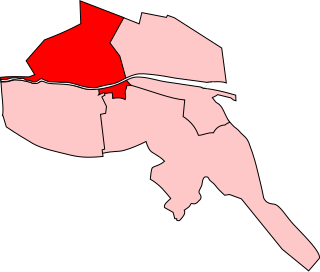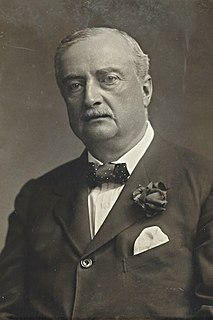Related Research Articles
South Dublin was a county constituency in Ireland from 1885 to 1922. It elected one Member of Parliament (MP) to the House of Commons of the Parliament of the United Kingdom, using the first past the post voting system.
St James's, a division of Dublin, was a UK parliamentary constituency in Ireland. It returned one Member of Parliament (MP) to the British House of Commons 1918–1922, using the first past the post electoral system.
St Michan's, a division of Dublin, was a UK parliamentary constituency in Ireland. It returned one Member of Parliament (MP) to the British House of Commons 1918–1922, using the first past the post electoral system.

College Green, also called Dublin College Green or College Green Division, Dublin, was a UK parliamentary constituency in Dublin. It returned one Member of Parliament (MP) to the House of Commons of the Parliament of the United Kingdom from 1885 to 1922.

Dublin Harbour, a division of Dublin, was a UK parliamentary constituency in Ireland. It returned one Member of Parliament (MP) to the House of Commons of the Parliament of the United Kingdom from 1885 to 1922.

Dublin St Patrick's, a division of Dublin, was a UK parliamentary constituency in Ireland. It returned one Member of Parliament (MP) to the United Kingdom House of Commons from 1885 until 1922. It had three wards: Merchant's Quay, Usher's Quay and Wood Quay.

St Stephen's Green, a division of Dublin, was a UK parliamentary constituency in Ireland. It returned one Member of Parliament (MP) to the British House of Commons 1885–1922.
Patrick Lynch was an Irish barrister who served as Attorney General of Ireland from 1936 to 1941. He was also a Senator for the Labour Panel from 1934 to 1936.

The 1918 East Cavan by-election was a parliamentary by-election held for the United Kingdom House of Commons constituency of East Cavan on 20 June 1918. The election was caused by the death of the sitting member, Samuel Young of the Irish Parliamentary Party.

The Irish component of the December 1910 United Kingdom general election took place between 3 and 19 December, concurrently with the polls in Great Britain. Though the national result was a deadlock between the Conservatives and the Liberals, the result in Ireland was, as was the trend by now, a large victory for the Irish Parliamentary Party. The IPP supported the Liberals to form a government after the election. This was to be the party's last victory, however. Due to the outbreak of World War I in 1914, the next general election would not be held until 1918, by which time events both in Ireland and Britain and outside would conspire to see the rise of a new nationalist party, Sinn Féin, and the subsequent demise of the IPP.
The 1917 Inverness-shire by-election was a parliamentary by-election held for the House of Commons constituency of Inverness-shire in the Scottish Highlands on 2 January 1917.
The 1917 Kilkenny City by-election was held on 10 August 1917. It followed the death of the incumbent Irish Parliamentary Party MP, Pat O'Brien. It was won by the Sinn Féin candidate W. T. Cosgrave, who defeated John Magennis, a three-time Mayor of Kilkenny. Cosgrave won while he was in prison for his role in the Easter Rising.
The 1917 East Clare by-election was held on 10 July 1917. It followed the death of the incumbent MP, Willie Redmond of the Irish Parliamentary Party, who was killed in action during the First World War. The seat had been held since its creation in 1885 by constitutional nationalist MPs, and Redmond had been unopposed in every election since 1900. The result was announced on 11 July 1917.
The 1917 Belfast South by-election was held on 2 July 1917. The by-election was held due to the death of the incumbent Conservative MP, James Chambers. It was won by the Conservative candidate William Arthur Lindsay, who was elected unopposed.

The 1917 South Longford by-election was held on 9 May 1917 due to the death of the incumbent Irish Parliamentary MP, John Phillips. The by-election ended in a surprise Sinn Féin victory over the Irish Parliamentary Party following a very close vote. The result was not announced until 10 May due to a recount.
The 1917 Belfast South by-election was held on 9 April 1917. The by-election was held due to the incumbent Irish Unionist MP, James Chambers, becoming Solicitor-General for Ireland. Chambers was re-elected unopposed.
The February 1917 Dublin University by-election was held on 5 February 1917. The by-election was held due to the incumbent Irish Unionist MP, James Campbell, becoming Lord Chief Justice of Ireland. It was won by the Irish Unionist candidate Arthur Warren Samuels.
The 1917 North Roscommon by-election was held on 3 February 1917. The by-election was held due to the death of the incumbent Irish Parliamentary MP, James Joseph O'Kelly. The election took place nine months after the 1916 Rising. The election was contested by Thomas Devine, standing for the Irish Parliamentary Party, who was expected to win comfortably, and Jasper Tully, a local newspaper owner who was running as an independent.